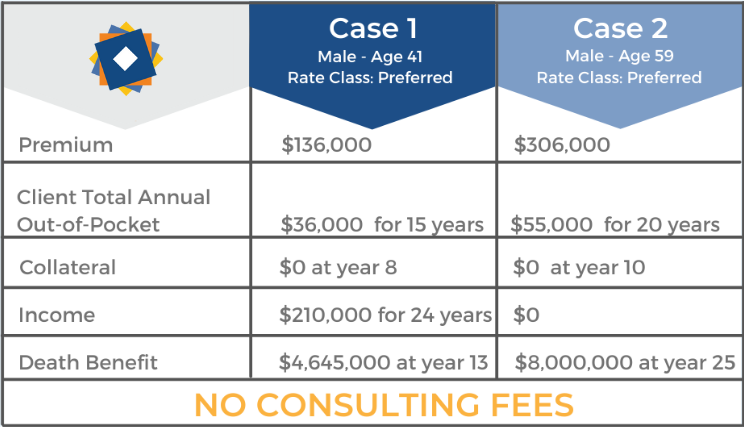A Practical Guide to Launching Your Career in Product Marketing
Introduction: Why Product Marketing?
Product marketing is a dynamic discipline at the intersection of product development, customer insight, and go-to-market strategy. Professionals in this field play a crucial role in launching products, shaping messaging, and ensuring market success. As organizations increasingly recognize the value of product marketing, demand for skilled product marketers continues to rise. This guide provides a comprehensive roadmap-including educational requirements, practical experience, real-world examples, and step-by-step strategies-to help you enter and thrive in product marketing.
Understanding the Product Marketing Role
Product marketers are responsible for bridging the gap between product development and market adoption. They drive product launches, develop messaging and positioning, enable sales teams, and analyze market trends. Typical responsibilities include:
- Conducting market and customer research to inform product positioning
- Building go-to-market strategies for product launches
- Developing messaging and value propositions
- Enabling sales teams with collateral and training
- Analyzing product performance and adjusting strategies accordingly
Roles span from
Associate Product Marketing Manager
(entry-level) to
VP of Product Marketing
(executive), each with increasing responsibility and influence on business outcomes
[4]
.
Step 1: Building the Educational Foundation
Most product marketing positions require a bachelor’s degree, but there is no strict requirement for a specific major. Degrees in business, marketing, communications, or psychology can provide a strong foundation, especially when your coursework includes:
- Market Research and Analysis : Learn to gather and interpret market data
- Consumer Behavior : Understand purchasing motivations
- Digital Marketing : Explore online strategies like SEO and social media
- Business Strategy : Develop skills for aligning marketing with organizational goals
Completing relevant coursework is valuable for both theoretical understanding and practical application [2] . For those aiming for leadership, pursuing an MBA with a marketing focus or specialized certifications can provide a competitive edge and deeper business acumen [3] .
Step 2: Gaining Practical Experience
Direct experience is essential for entering product marketing. The most common entry points include internships, rotational programs, and entry-level marketing roles. Here are proven pathways:
- Internships : Seek summer or part-time internships in marketing departments. You will assist with research, campaign execution, and product launches, gaining hands-on exposure to market dynamics.
-
Entry-Level Roles
: Positions such as
Marketing Coordinator
,
Product Marketing Associate
, or
Marketing Assistant
provide foundational experience. These roles involve supporting campaigns, conducting competitive analysis, and developing marketing collateral [5] . - Rotational Programs : Some companies, including Google and Salesforce, offer associate product marketing manager (APMM) programs for recent graduates. These programs rotate participants through various marketing functions, building a broad skill set [3] . Such opportunities may be limited, so research company career pages for availability.
If you do not find a direct product marketing role, consider jobs in related areas-such as sales, customer success, or market research-that enable you to build transferable skills and demonstrate business impact.
Step 3: Developing Essential Skills
Success in product marketing requires a diverse skill set that combines analytical, creative, and interpersonal strengths. Key skills include:
- Market Research & Analysis : Ability to understand customer needs and competitive landscapes
- Strategic Thinking : Designing go-to-market strategies that align with business goals
- Communication : Crafting compelling messaging for varied audiences
- Collaboration : Working with product, sales, and engineering teams
- Project Management : Coordinating product launches and cross-functional initiatives
Enhance these skills through real-world projects, online courses, and mentoring relationships. Consider platforms like Coursera or LinkedIn Learning for up-to-date marketing and analytics training [5] .

Source: bacana.one
Step 4: Navigating the Product Marketing Career Path
Product marketing offers well-defined progression, each step building on your experience, skills, and leadership abilities:

Source: englishunite.com
- Associate Product Marketing Manager (1-3 years): Support launches and research under supervision. Median salary: $73,000 [4] .
- Product Marketing Manager (3-5 years): Own product launches and strategies. Median salary: $85,500 [4] .
- Senior Product Marketing Manager (5-10 years): Lead launches with minimal supervision, manage teams. Median salary: $124,000 [4] .
- Director/VP Roles (10+ years): Oversee strategies across multiple products and teams. Median salary: up to $213,500 [4] .
Career advancement depends on your ability to deliver results, demonstrate leadership, and adapt to changing market conditions. Consider seeking mentors within your organization or professional networks to accelerate growth.
Step 5: Building Your Portfolio and Personal Brand
Employers value candidates who can showcase real-world impact. Build a portfolio that includes:
- Case studies of product launches or marketing campaigns you contributed to
- Examples of market research or customer analysis projects
- Sales enablement materials or presentations you developed
- Quantifiable outcomes (e.g., increased adoption rates, improved messaging effectiveness)
Publish articles on platforms like LinkedIn, participate in relevant industry webinars, and join professional associations such as the Product Marketing Alliance. Networking can open doors to mentorship, job opportunities, and industry insights [4] .
Step 6: How to Find and Apply for Product Marketing Opportunities
Begin by researching companies and industries that interest you. Review job descriptions for product marketing roles to identify required qualifications and tailor your resume accordingly. Use job platforms such as LinkedIn, Indeed, and Glassdoor to search for roles like “Product Marketing Associate,” “Product Marketing Manager,” and “Marketing Coordinator.” Because direct entry into product marketing may be rare for new graduates, consider the following approach:
- Apply to entry-level marketing roles and express your interest in product marketing during interviews
- Leverage internships or rotational programs for hands-on experience
- Network with current product marketers via industry conferences, webinars, or alumni associations
- Request informational interviews to learn about career paths and company expectations
Many organizations also list open roles on their official careers page. For roles at companies such as Google and Salesforce, search for “Associate Product Marketing Manager Program” on their official websites or careers pages for verified opportunities [3] .
Potential Challenges and Solutions
Breaking into product marketing can be competitive. Common challenges include limited entry-level openings and the need to demonstrate relevant experience. To overcome these, consider:
- Gaining experience in related marketing or sales roles to build foundational skills
- Completing project-based online courses to create portfolio work
- Actively networking and seeking mentorship for guidance and referrals
- Staying informed on industry trends through reputable publications and professional groups
Persistence, continuous learning, and adaptability are key attributes for breaking into and advancing within product marketing.
Alternative Pathways
Some product marketers transition from fields such as management consulting, sales, or product management, leveraging their analytical and cross-functional expertise. MBA graduates and those from consulting backgrounds are often valued for their strategic thinking and business insight [3] . If you are mid-career in another function, consider seeking cross-functional project opportunities or attending product marketing bootcamps to facilitate your transition.
Key Takeaways and Next Steps
To get into product marketing, focus on building a solid educational foundation, gaining practical experience through internships or entry-level roles, and continuously developing key skills. Create a portfolio that showcases your impact and leverage professional networks for mentorship and job leads. Although the journey may involve alternative pathways and overcoming challenges, persistence and a strategic approach can accelerate your success in this rewarding field.
For the latest industry trends, salary benchmarks, and open roles, regularly consult reputable career platforms, attend webinars, and connect with professional associations in product marketing.
References
- [1] Userpilot (2025). Product Marketing Manager Career Path.
- [2] Young Urban Project (2024). Product Marketing Career Path: Roadmap to Grow as a PMM.
- [3] RocketBlocks (2020). The product marketing career path.
- [4] Product Marketing Alliance (2023). So you want to become a product marketing manager?
- [5] Coursera (2025). What Does a Product Marketing Manager Do? 2025 Career Guide.



